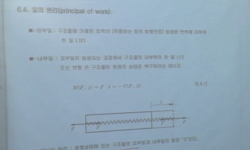The purpose of this experimental study is to investigate the damage mechanism due to shear-fatigue behavior of high-strength reinforced concrete beams under repeated loading. The relationship between the number of cycles and the deflection or strain, ...
http://chineseinput.net/에서 pinyin(병음)방식으로 중국어를 변환할 수 있습니다.
변환된 중국어를 복사하여 사용하시면 됩니다.
- 中文 을 입력하시려면 zhongwen을 입력하시고 space를누르시면됩니다.
- 北京 을 입력하시려면 beijing을 입력하시고 space를 누르시면 됩니다.
https://www.riss.kr/link?id=A105651218
- 저자
- 발행기관
- 학술지명
- 권호사항
-
발행연도
2001
-
작성언어
English
- 주제어
-
등재정보
SCIE,SCOPUS
-
자료형태
학술저널
-
수록면
301-314(14쪽)
- 제공처
-
0
상세조회 -
0
다운로드
부가정보
다국어 초록 (Multilingual Abstract)
The purpose of this experimental study is to investigate the damage mechanism due to shear-fatigue behavior of high-strength reinforced concrete beams under repeated loading. The relationship between the number of cycles and the deflection or strain, the crack growths and modes of failure with the increase of number of cycles, fatigue strength, and S-N curve were observed through a fatigue test. Based on the fatigue test results, high-strength reinforced concrete beams failed at 57-66 percent of static ultimate strength for 2 million cycles. The fatigue strength at 2 million cycles from S-N curves was shown as about 60 percent of static ultimate strength. Compared to normal-strength reinforced concrete beams, fatigue capacity of high-strength reinforced concrete beams was similar to or lower than fatigue capacity of normal-strength reinforced concrete beams. Fatigue capacity of normal-strength reinforced concrete beams improved by over 60 percent.
동일학술지(권/호) 다른 논문
-
Structural identification of a steel frame from dynamic test-data
- Techno-Press
- Morassi, A.
- 2001
- SCIE,SCOPUS
-
Impact study for multi-girder bridge based on correlated road roughness
- Techno-Press
- Liu, Chunhua
- 2001
- SCIE,SCOPUS
-
Shaking table study of a 2/5 scale steel frame with new viscoelastic dampers
- Techno-Press
- Chang, K.C.
- 2001
- SCIE,SCOPUS
-
Fuzzy logic based estimation of effective lengths of columns in partially braced multi-storey frames
- Techno-Press
- Menon, Devdas
- 2001
- SCIE,SCOPUS






 ScienceON
ScienceON






